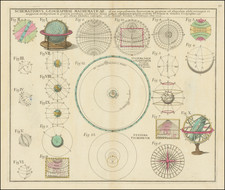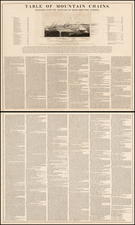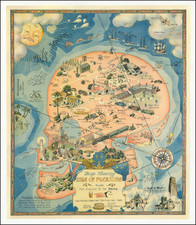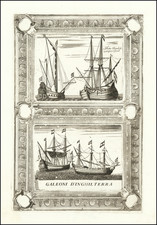Kurz & Allison's "The Great International Naval Review, New York, April 27th 1893"
"The Great International Naval Review" chromolithographic print by Kurz & Allison is a vibrant testament to the grandeur of naval power and international diplomacy in the late 19th century. Captured on April 27th, 1893, in New York, this illustrious artwork offers a dazzling panorama of ships from numerous world powers, signifying a unique moment of unity, pride, and mutual recognition among these nations.
The International Naval Review of 1893 was a monumental event that celebrated naval might and fostered international camaraderie. It was one of the highlights of the World's Columbian Exposition, a world's fair held in Chicago to commemorate the 400th anniversary of Christopher Columbus's discovery of the New World. The Exposition itself was an opportunity for nations to showcase their advancements, cultures, and strengths, and the Naval Review, held in New York, was an extension of this grand celebration.
The United States, keen to present itself as a rising world power, saw the International Naval Review as an opportunity to showcase its modern naval fleet and foster goodwill among nations. Planning for the event was meticulous, given the vast number of ships from different countries set to participate. On April 27th, 1893, the waters around New York Harbor teemed with warships from all over the world. President Grover Cleveland presided over the review. Starting with U.S. vessels, the procession of international warships cruised past the presidential yacht, each saluting as they passed.
The waterscape presented a visual representation of international naval power, with sleek modern warships bedecked in flags and bunting, anchored amidst the backdrop of a rapidly modernizing New York City skyline. Thousands of spectators, both on land and in boats, turned out to witness the procession. The harbor, streets, and piers were awash with excitement.
The assemblage of ships in the harbor represented a veritable "who's who" of naval powerhouses of the time:
-
Argentina (ARG): "Nueve de Julio," named after Argentina's independence day, symbolized a young nation's burgeoning power.
-
Brazil (BRA): Ships like "Aquidaban," "Tiradentes," and "Republica" spoke to Brazil's rising prominence in South America.
-
England (ENG): The British naval forces showcased ships like "Blake," "Australia," "Magicienne," "Tartak," and "Partridge," underscoring Britain's reputation as the dominant global maritime power.
-
France (FRA): The inclusion of ships such as "Jean Bart," "Arethuse," and "Hussard" exhibited France's continued influence and rivalry with England on the high seas.
-
Germany (GER): The "Kaiserin Augusta," "Seeadler," and "Holivan Speyk" were testament to Germany's growing imperial ambitions and burgeoning navy.
-
Italy (ITA): With ships named "Etna," "Giovanni Bansan," and "Dogali," Italy highlighted its renewed focus on naval prowess after its unification.
-
Russia (RUSS): The "Demetri Dons Koi," "Gen. Admiral," "Rynda," "Emperor Nicholas," "Ladmiral Machimoff," and "Pamiate Azova" signified Russia's sprawling naval influence, matching its vast territories.
-
Spain (SPA): "Reina Recente," "Infanta Isabel," and "Nueva España" represented the once-dominant global power, now waning but still formidable.
-
United States (US): The home team showcased a series of ships, including "Philadelphia," "Chicago," "Vesuvius," "U.S. Newark," "Baltimore," "San Francisco," "Atlanta," "Charleston," and "Dolphin." Their presence was symbolic of a nation on the rise, soon to overshadow many of its European counterparts.
This print, beyond its evident aesthetic appeal, serves as a historical snapshot. It reminds viewers of a time when naval power was paramount to a nation's global stature. Kurz & Allison, through their meticulous and vibrant representation, not only showcased the majesty of these sea giants but also immortalized a moment when nations, despite their differences and rivalries, came together in a display of mutual respect and recognition.









![[ Compass Rose ]](https://storage.googleapis.com/raremaps/img/small/85884.jpg)




